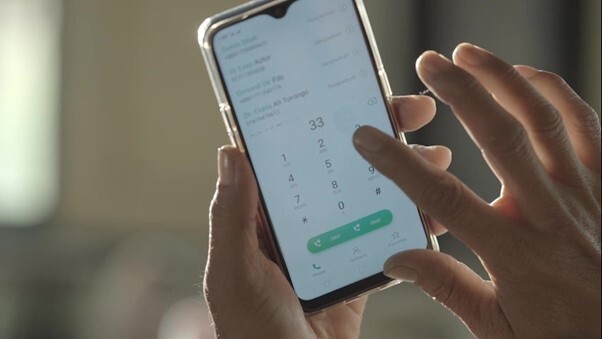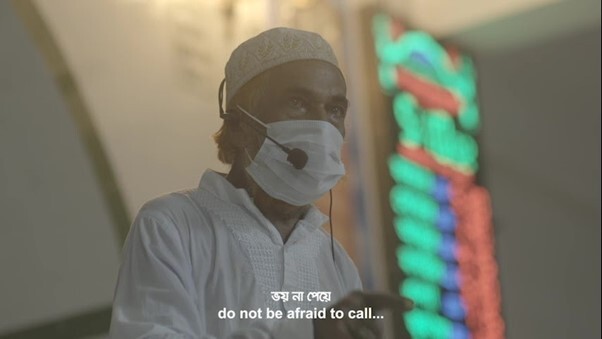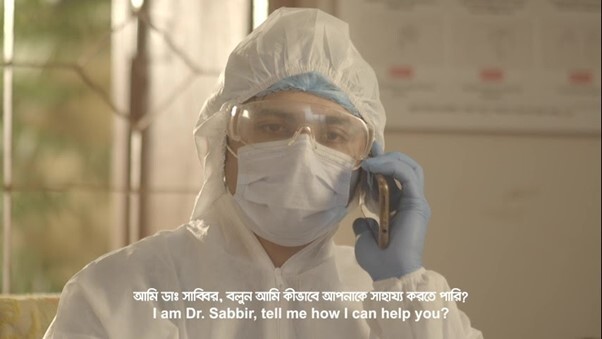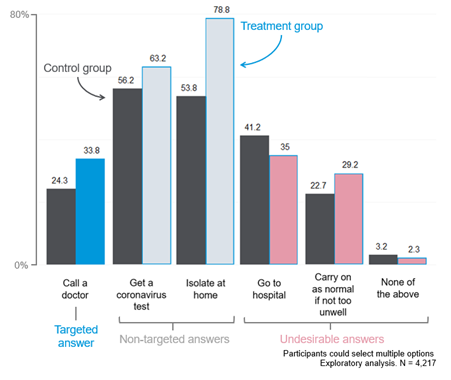As of late July 2021, there have likely been more than 10 million deaths from Covid globally. Part of this devastating impact reflects a lack of awareness of what actions people need to take to seek care and reduce further transmission if symptoms become apparent. Even if people know what to do, social stigma can prevent them from taking those actions.
In 2020 we began working on Covid-related social stigma in Bangladesh, and interviewed doctors who operated a national Covid medical helpline “333”. The doctors were concerned that stigma could prevent people from accessing the care they need in person, with one doctor telling us:
Callers prefers to be treated at home rather than in a clinic or hospital due to being identified as infected”
A failure to seek medical care is one of the most prevalent, impactful and serious consequences of stigma. This has been seen in previous research on HIV and Ebola.
Applying behavioural insights to edutainment
To tackle this we created a video to encourage frontline workers – such as healthcare workers, teachers and police officers – to instruct others in their community to self-isolate and call a doctor on the helpline, a discreet way of seeking care if they have Covid symptoms. Video-based ‘edutainment’ – (content seeking to educate the audience whilst entertaining) – has been used in various contexts ranging from reducing domestic violence to encouraging HIV testing.
We worked with Access to Information (a2i, an innovation unit within the ICT Division of the Bangladeshi government) and Zanala (a market communications agency in Bangladesh) to design and develop the storyline and the video content.
The video (which can be seen here) was 6 minutes in length: short enough to retain attention but long enough to develop a credible story. In addition, we incorporated three key behaviourally informed features:
1. Make the call to action clear and memorable:
We provided a clear call to action throughout the video and repeated the message that we want people to use the helpline. The helpline number was introduced very early in the video (after 35 seconds) and is repeated five times in total.

A shot from the video showing a character dialling the helpline
2. Use a contextually relevant and respected messenger:
We used a respected messenger to communicate our main message within the video. The video showed an Imam preaching to the community via a microphone and encouraging them to call the helpline. We also drew attention to this with one character saying: “if the Imam is encouraging me to do so, let me give the helpline a call”.

A shot from the video showing an Imam encouraging use of the helpline
3. Directly demonstrate the behaviours you want to encourage:
In the video we showed viewers how to call the helpline and what to expect after calling. This displayed clearly how easy and quick the process was, including that the individual just needed to press one number on their keypad to be connected with a doctor. We also role-modelled how to interact safely with symptomatic individuals throughout the video.

A shot from the video showing a doctor answering the helpline call
The video increased people’s self-belief that they can help their community and their knowledge of how to do so
Rigorous testing of edutainment is still relatively rare, and so we worked with a2i to implement a randomised controlled trial on their online learning platform MuktoPaath between January and March 2021 to evaluate whether the video actually impacted the audience.
We asked participants a variety of questions to gauge their knowledge of what to advise people with symptoms and their self-belief in helping their community to deal with Covid.
Close to 6,000 frontline workers in Bangladesh were part of our randomised trial and the results suggest that showing the video had the following impacts:
- It increased knowledge of what to advise people with Covid symptoms. Participants who were shown the video were 2.4 percentage points more likely to select the targeted combination of advice options — a 25% difference relative to control group — including being 10 percentage points more likely to say they would advise calling a doctor; in addition they were 25 percentage points more likely to say they would advise self-isolating (Figure 1).
- It improved self-belief in people’s ability to help their community fight Covid. Those shown the video were 9 percentage points more likely to report that they could ‘definitely’ help their community — a 13% difference relative to the control group.
Figure 1: Participants’ responses when asked for the most important advice they would provide someone with Covid symptoms

We also found no evidence of a backfire effect on stigmatising attitudes, despite a slight concern that depicting people with covid in the video could have that effect. If anything, stigma seemed to decrease as a result of the video. To find out more about the trial and the results, check out our full report.
This work also helps to demonstrate the potential of online platforms such as Muktopaath to apply and test behavioural insights before rapid scaling of effective solutions in response to emerging policy challenges.
So what are the next steps?
a2i are now distributing the video more widely on their platforms, and we are currently pursuing new ways that edutainment could be used as part of the Covid response in Bangladesh and elsewhere (e.g., showing the vaccine user journey to increase covid vaccine uptake).
In future edutainment projects, we hope to test both how to increase viewership and how to make edutainment videos more effective. If you would like to collaborate with us on this work, please get in touch!
We’d like to thank Purabi Matin, Mehdi Hassan, Esthiak Khan, Ariful Islam at a2i for their support and work on the project, Zanala for their work on the video & the Global Innovation Fund for funding this collaboration.






